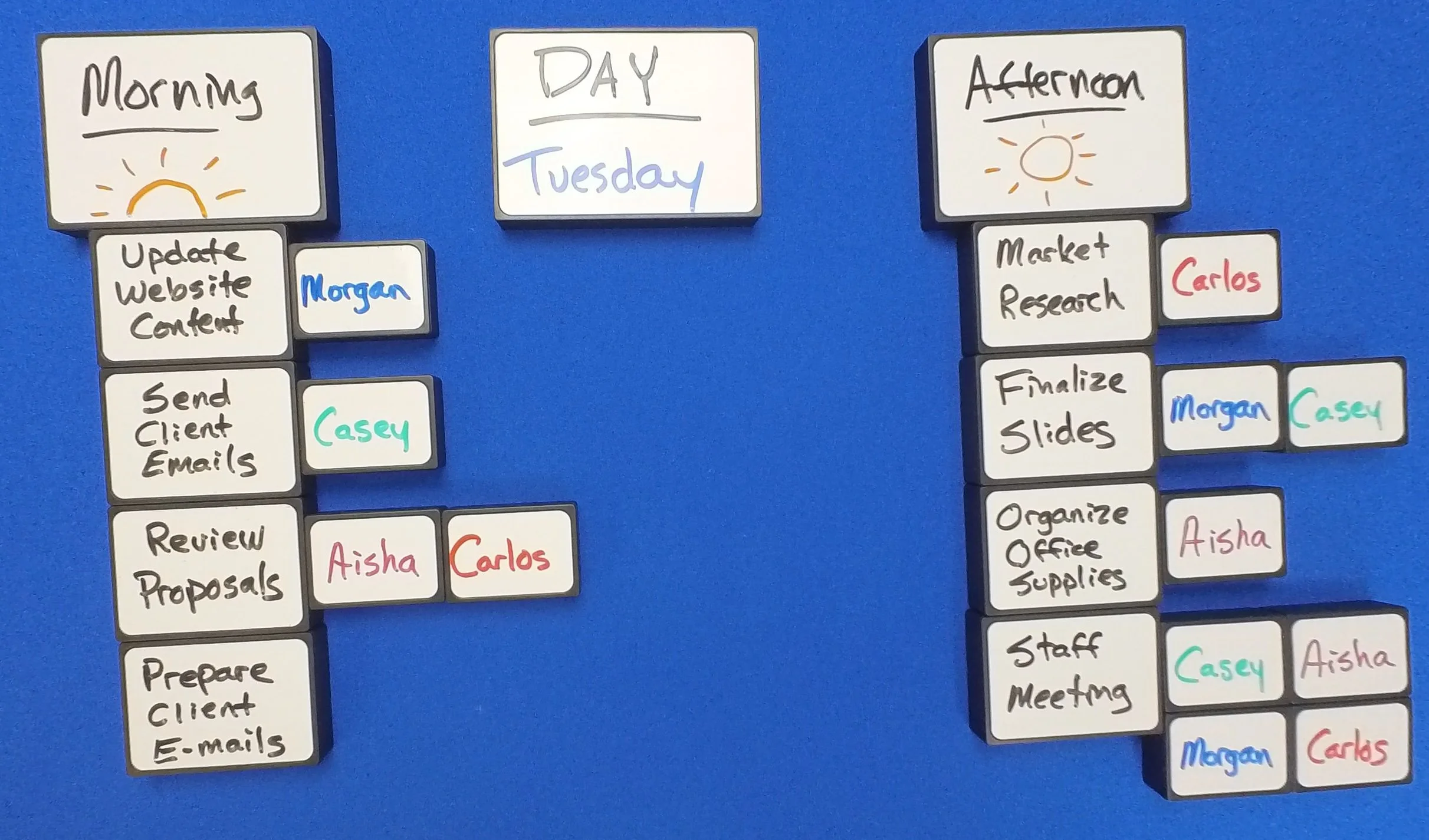Building a Project Status Board with Switch-Its
Managing multiple projects simultaneously can be a daunting task, but a well-organized project status board can make a world of difference. Switch-Its offer a flexible and dynamic way to keep track of project stages, tasks, and progress. In this blog, we'll explore how using a project status board with Switch-Its can enhance team productivity and ensure that projects stay on track.
A project status board is divided into key projects, with each project further categorized into three statuses: "In Progress," "On Hold," and "Complete." This clear division allows team members to quickly see the current state of each project. Switch-Its make it simple to move tasks between different statuses, reflecting real-time updates. This flexibility is particularly beneficial during team meetings or daily stand-ups, where task statuses can change frequently.
By using different colors or labels for each status, teams can quickly differentiate between stages and ensure that everyone is aligned. Additionally, the visual nature of the board helps in identifying dependencies between tasks, ensuring that critical paths are clear and manageable.
Assigning Office Tasks with Switch-Its
Effective time management is crucial for productivity, especially in a busy office environment. An AM/PM chart using Switch-Its can help you organize your day by clearly assigning tasks and responsibilities. In this blog, we'll discuss how to use an AM/PM chart to streamline your workflow and ensure that your team stays on track throughout the day.
Effective time management is crucial for productivity, especially in a busy office environment. Using a morning/afternoon chart with Switch-Its can help you organize your day by clearly assigning tasks and responsibilities. In the morning, employees can focus on high-priority tasks that require concentration and energy, such as updating website content, sending client emails, reviewing proposals, and preparing documents. This approach sets a strong foundation for the day ahead, ensuring that critical tasks are addressed when everyone is at their peak performance.
In the afternoon, when energy levels may dip, it's beneficial to allocate routine or less demanding tasks. Activities such as market research, finalizing slides, organizing office supplies, and holding staff meetings can be efficiently handled during this time. The afternoon is also perfect for collaborative efforts, as team members can participate in these activities, ensuring that the day ends on a coordinated note. By clearly dividing tasks between morning and afternoon, a Switch-Its chart can streamline your workflow and keep your team on track throughout the day.




